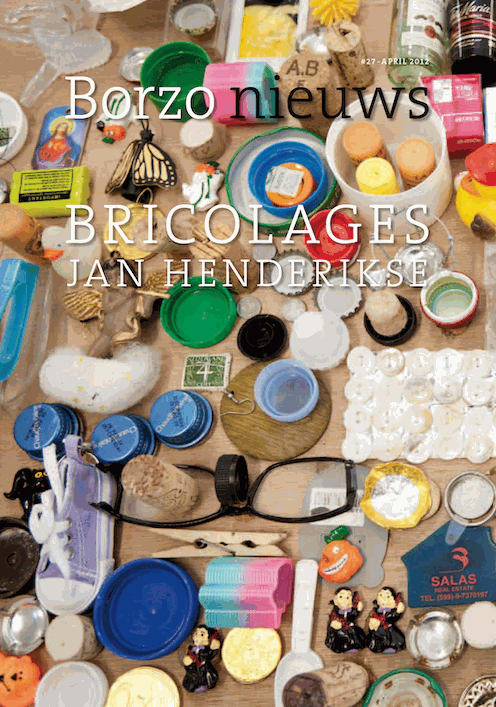Jan Henderikse | Bricolages
Of all 'hardcore' Zero artists, Jan Henderikse is still the most inspiring. In her review of the exhibition Nul = 0 in the Stedelijk Museum Schiedam (NRC, 18.10.11, Rebellen van Nul still up to date), Lucette ter Borg describes Jan Henderikse as master bricoleur.
Master bricoleur, you could translate it as master craftsman. "Bricolage" has more or less become a concept in the Visual Arts, which refers to the creation of a work of art through the composition and composition of a multitude of objects, things, knickknacks, if you like. Rauschenberg used materials from the oil and car industry in the 1960s: he called them "gluts". We hope to be able to see the 'Beanery', the café interior created from 'bricolages', by Kienholz soon. Arman, César, Tinguely, Mark Brusse, Tony Cragg. All processed objects, materials, stuff, things, into sculptures or "paintings on the wall". Jan Henderikse - master illustrator. Henderikse gladly accepts this honorary title and proposes to label his exhibition at Borzo as BRICOLAGES.
Henderikse co-founded the Dutch Zero Movement in 1960, together with Armando, Henk Peeters and Jan Schoonhoven. Zero, in turn, was part of a larger European movement with kindred spirits, often friends such as Uecker, Mack, Piene (Zero), Fontana, Manzoni and Yves Klein.
An impersonal manuscript, the rejection of the traditional painting, the use of all kinds of materials and the serial character, form the common thread, the trait d'union, between the various related artists in Germany, Italy, France and the Netherlands.
Henderikse has remained very consistent and steadfast for the past 50 years. After having briefly painted informally in the late 1950s, in 1960 he renounces brush and canvas and composes, assembles, paints from the Zero period only with existing materials. He makes coin and cork reliefs, but also tableaux with found objects and toys bought in New York 'cheap stores', kitsch ...
These worthless knickknacks are in the hands of Henderik art. The order that he applies, the rhythm, the repetition and the serial character create "paintings" that precisely because of this have a certain aesthetic. Henderikse does not hide political or social critical messages in his reliefs. Or it should be that even the most ordinary or banal products of the consumer society are elevated to art by manipulation and order of the artist.
Last year Hatje Cantz published the excellent monograph on Jan Henderikse, "Acheiropoita" (not made by human hands). The exhibition at Borzo includes works by Henderikse from 1958 to the present. The monograph and exhibition show how admirably steadfast, consistent and current this master bricoleur has created an impressive body of work to this day.
Paul van Rosmalen, Amsterdam, April 2012


